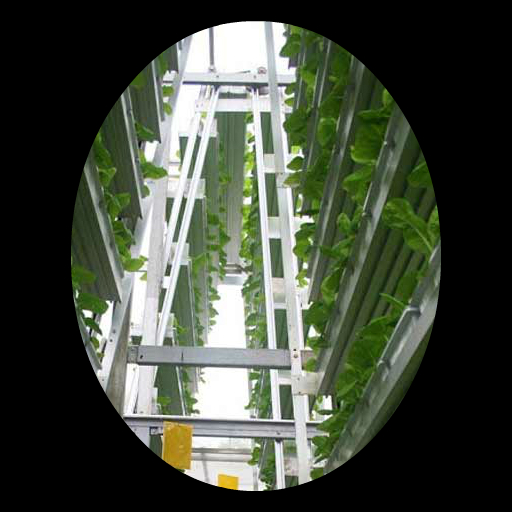Insung Tec, in Yongin/Korea, is operating the country’s first industrial vertical farm. The 165 square meter (1,776 square feet) factory floor has four seven-level plant beds. Green sprouts rise from each fluorescent-lit level. Vegetables such as kale, romaine and green lettuce, and basil grow here, where nutrients are fed into the soil through tubes. There is no natural light, and the workers are more lab technicians than farmers. Everybody first passes through an air curtain before putting on laboratory coats. Another air curtain removes any germ-carrying particulate matter that the first one missed. After that, an “air shower” blasts subjects from both sides before finally entering the main floor of the plant. The biggest merit of this vertical farm is that it can produce pesticide-free vegetables all ear-round, regardless of weather and seasonal growing patterns that limit more traditional farming. Commercially viable vertical farms yield 10 times the bounty per square meter than regular green houses. Other benefits of this vertical farm are reduced labour costs and a much quicker farm-to-market distribution ratio, made possible because vertical farms can be constructed nearer to, or inside, urban centres.
By the year 2050, nearly 80% of the earth’s population will reside in urban centres. Applying the most conservative estimates to current demographic trends, the human population will increase by about 3 billion people during the interim. An estimated 109 hectares of new land will be needed to grow enough food to feed them, if traditional farming practices continue as they are practiced today. At present, throughout the world, over 80% of the land that is suitable for raising crops is already in use (sources: FAO and NASA).
“Japan has about 50 such farms and they are normally smaller than 1,000 square meters.”
This vertical farming method seems to be the perfect solution to this urgent problem: How to feed the increasing population in a healthy way and keep transport at a minimum. When applying vertical farming, weather conditions won’t influence or put the harvest at risk and the quality of the vegetables can be easily surveyed and guaranteed. Although Korean salads from the vertical farm are at double price compared with the supermarket products, they are in high demand as also the Japanese nuclear plants disaster made people very health conscious.

0 Comments